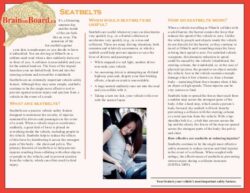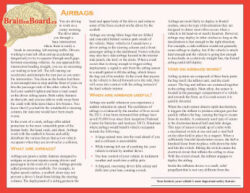Passive Safety Features
Passive safety features are those that help to protect vehicle occupants from further injury once a crash has already occurred. Unlike active safety features – which aim to prevent before or mitigate crashes when they do happen – the main function of passive safety features is to keep the driver and passengers protected within the vehicle from various crash forces.
Modern vehicles contain what engineers sometimes refer to as a life space. The life space is a protected area around vehicle occupants within which the chances of escaping a crash with minimal injuries are more likely. Passive safety features work to ensure that this life space is as safe as possible, and that vehicle occupants remain in this space throughout the crash. Crumple zones help to absorb and distribute crash forces before they reach the passenger and driver’s seats. Similarly, seatbelts, airbags, and headrests help keep the driver and passenger(s) stationary within the life space of the vehicle. Safety features like these reduce the risk of serious injury and allow drivers and passengers to ride out a crash.
The area outside of the life space is where more severe injuries may be unavoidable. For example, if a driver involved in a crash fails to wear his seatbelt, he may be projected outside of the life space of the vehicle, striking the windshield or other parts of the vehicle’s hard interior. In the event of a more forceful crash, the un-belted driver is often completely ejected from the vehicle.
Despite the classification of these features as “passive”, they are extremely important when it comes to reducing the severity of crash injuries. These features are also constantly being developed and refined. For example, in many new vehicles, airbags do not just inflate out of the steering column but also appear along the side-panels and even around the knees. Advanced seatbelts are also available that can moderate the amount of tension across a person’s body, so as to reduce instances of seatbelt-related injuries. Even headrests can include passive safety technology in order to reduce the risk of whiplash.
Visual rebranding is in progress for the following resources.


